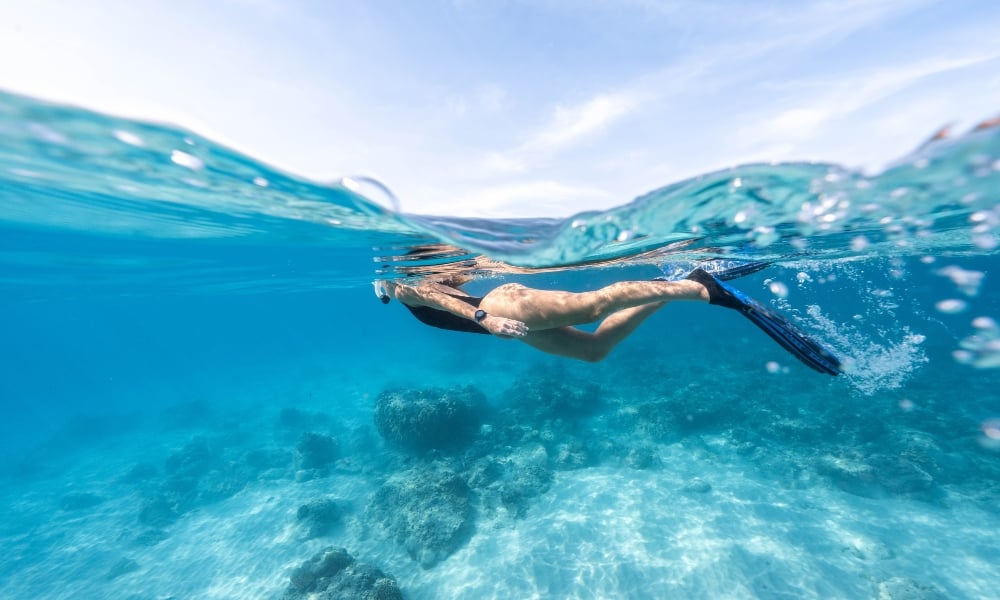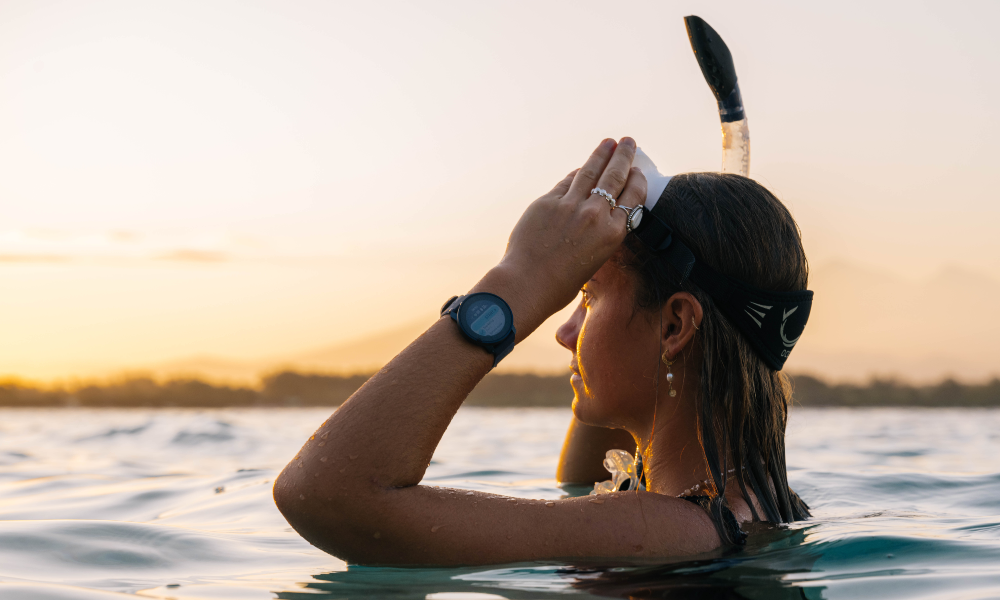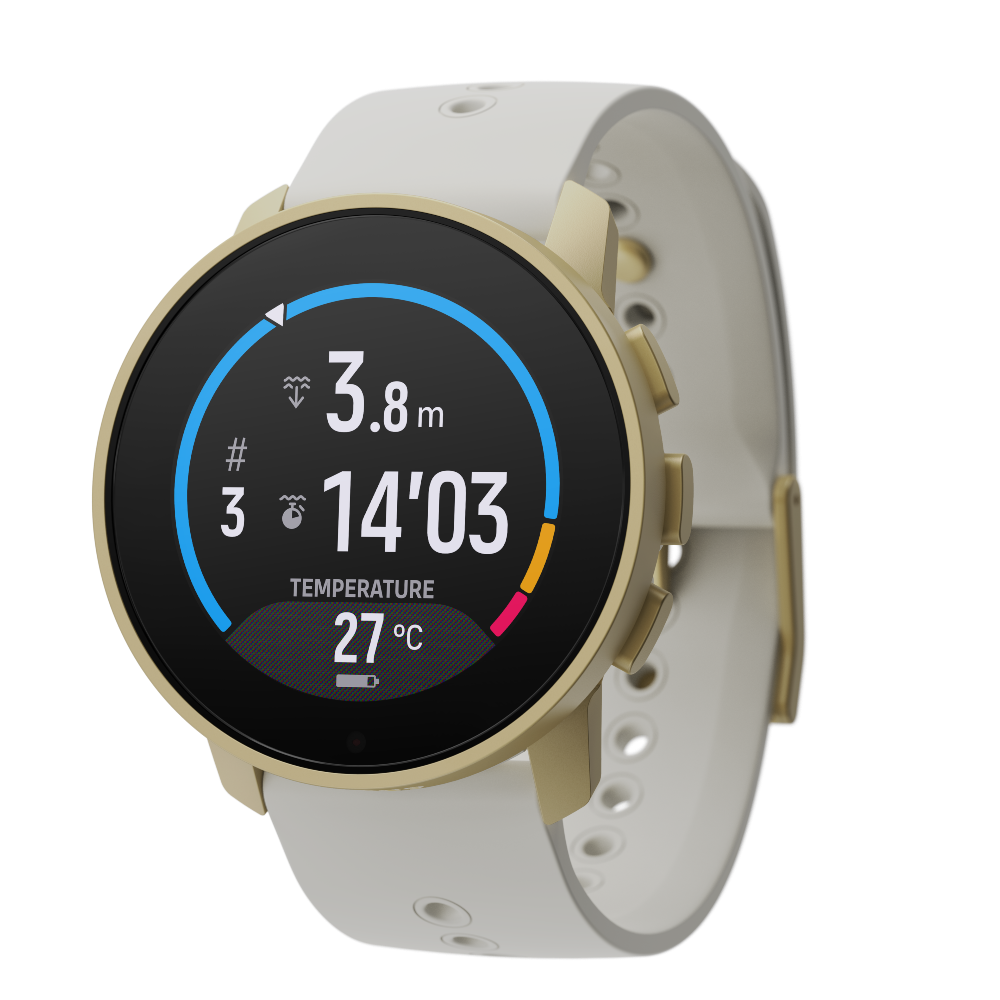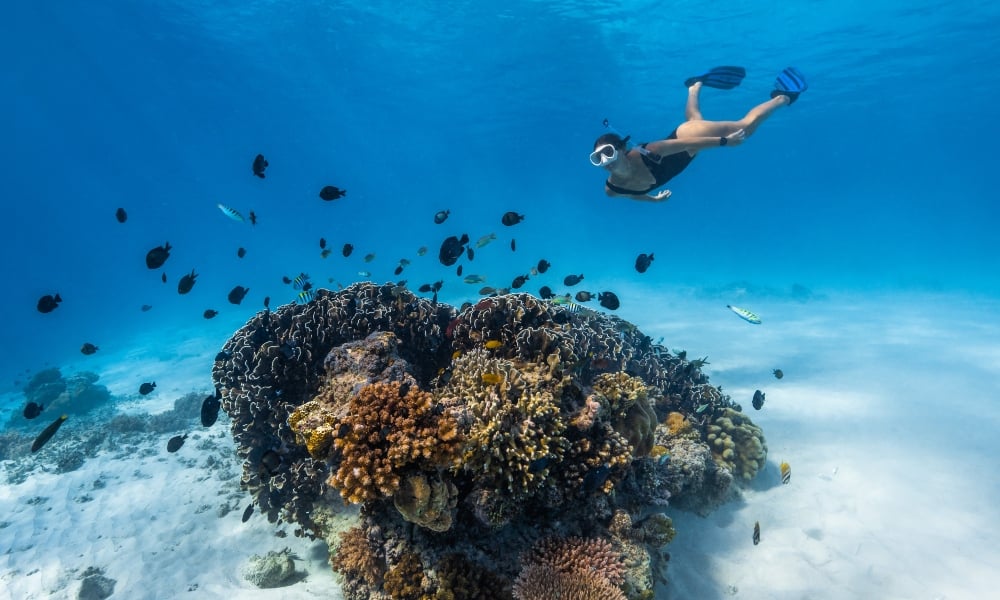Dipping beneath the surface of the ocean opens up an incredible new world. It can expand our minds and bring us closer to our blue planet. With snorkeling, there’s no need for dive training or to carry heavy dive equipment. All you need is a good mask and snorkel, fins, a rash guard, reef-safe sunscreen, basic knowledge, and the new Suunto 9 Peak Pro so you can use the “snorkeling mode”.
Are you planning on trying snorkeling for the first time? Or maybe looking for the best snorkeling locations for kids so you can share the experience with the whole family? Then before you go, read our 15 tips and keep everyone safe and ensure you all fall in love with snorkeling.
Become a good swimmer
This tip seems obvious and easy to overlook. But the better swimmer you are, the more enjoyable and relaxing your snorkeling trip will be. And being a good open water swimmer isn’t as straightforward as it sounds. It requires training and practice.
If you live far away from the ocean, or rarely go swimming in open water, then we recommend spending some time working on your swimming before your family snorkeling trip. Otherwise, you might find it strenuous rather than fun. Consider getting swimming lessons, and practice open water swimming. It’ll go a long way.
Read more about open water swimming!
Learn to relax in the water
This tip is really a continuation of the previous one. Being a good swimmer isn’t only about fitness, strength and technique. Though those are important for snorkeling in open water. It’s also about a kind of trust and relaxation. That’s also why it’s valuable to get lessons and spend time in open water before your snorkeling holiday.
The upshot is when we trust that our body can float, we no longer flail around in the water trying to keep ourselves from sinking. Instead, we can relax, let the water hold us and conserve our energy. This is another aspect of swimming we need to practice. It takes time to gain that trust.

Learn to breathe through the mouth
This is something you’ll start to learn when you get swimming lessons. It feels unnatural to begin with. It’s helpful to become familiar with before going on your snorkeling trip. While snorkeling, you’ll breathe in air through the snorkel above the surface into your mouth, and out through your mouth.
You can begin getting a feel for this before your trip by visiting your local pool and practicing with a mask and snorkel. Hold on to the edge of the pool with your face down in the water and your body and legs stretched out. Kick your legs to keep your body close to the surface and smoothly breathe in through the snorkel. By breathing calmly and deeply, you avoid building up C02 in the body. Breathe out through the snorkel slowly, too.
Start at your own level, but try to work up to extending your in and out breath to around four to five seconds.
Get snorkeling lessons
You’ve arrived at your snorkeling destination and the whole family is eager to get started. Slow your roll, and see if there’s somewhere you can get snorkeling lessons or get a guided session. You’ll learn more that way about gear, technique and what to look for. You’ll feel more confident and have more fun.
Get good gear
Invest in good quality snorkeling gear and learn to fit it properly. This will reduce annoying interruptions and obstacles when you and the family are out in the water. If you’re renting gear at your snorkeling destination, try to rent newish gear that’s the right size.
Position your snorkel properly
This is another thing you can practice in a pool. While snorkeling, the back of your head should be above the surface. Your snorkel should be on a 45 degree angle with roughly half the tube above the surface. Keep your head down and look a little ahead. This will prevent you from accidentally sucking in and swallowing water.
Make sure your mask and snorkel fit you and are positioned properly.

Expel water this way
It’s normal for a little water to get caught in the snorkel’s reservoir. It’s annoying because it interferes with having a smooth breath. If that happens you need to clear it. To do that, take a full breath and exhale forcefully to blow all the water out. Inhale slowly and gently. All clear!
Prevent mask fogging
Next to having water in your snorkel, a foggy mask is the most annoying thing. It stops you from really relaxing and taking it all in. There’s tons of blog article explaining how to prevent this, but it comes down to this:
- Clean your new mask with dishwashing liquid before going snorkeling.
- Apply a defogging solution before your sessions.
- Rinse your mask once you’re back on land.
Go with a group or a buddy
We don’t recommend going snorkeling alone. Ever. It’s safer and more fun to go with a group or at least with a buddy. That way you can keep an eye out for each other. And make sure you tell someone onshore when and where you’ll be going and when you’ll be back by.

Track your snorkeling session with a Suunto 9 Peak Pro
The new Suunto 9 Peak Pro GPS sport watch is the fastest, most powerful watch we’ve ever made. It has a best in-class battery life and is the first Suunto watch to include a snorkeling - or mermaid sport mode.
You can track your snorkeling session, including your dives down to -10 m, with this watch and it will tell you your depth while you’re out there. Back on land, you’ll be able to see more info about your dive in Suunto app, including a map of where you swam, distance, duration, heart rate and depth.
Read more about how to use the snorkeling mode here!
How to dive down
This is a skill worth learning because it will allow you to see marine life more closely and in detail. Just remember, don’t push it. The big risk of breath holds is they can lead to blackouts and having one underwater is dangerous. So consider getting professional lessons and start with shallow dives and follow your max depths and time it on your watch. Then gradually extend the times and depths as your capacity increases.
Here’s how to dive down: take a deep breath (but do not hyperventilate) and roll forward by bending your upper body to a 90 degree angle. Your feet will be vertical above the surface and once they hit the water start kicking and swimming down. Make sure you equalize by pinching your nose to avoid any discomfort in your ears as the pressure changes. Always do this with a buddy who stays at the surface while you dive.
Keep it calm and sheltered your first time
This tip is especially important if it’s your first time and you’re not familiar with swimming in open water. Choose a time that’s calm — you’ll get better underwater visibility that way too — and in an area that is sheltered from wind and swell. Then you won’t get pushed around as much and use less energy. Use MyRadar to keep track of the weather.

Learn to read the ocean
This is another thing that takes time. It’s especially hard to learn if you have never lived close to the sea. One of the best ways to learn this is to talk to an informed local and ask them about the currents, tides, dominant wind directions and other things to look out for. With this local knowledge, you’ll be better able to choose your time and locations.
Prepare your body before taking the plunge
You know your location and time, you have all the gear and are set to go. One last thing — get your body ready. Here is how:
- Make sure you are well hydrated. Drink plenty of water in the hours before your session.
- Don’t go out with a full or empty stomach. Have a snack shortly before you go.
- When you get to the beach, spend 15 minutes stretching and doing mobility exercises to warm up your body.
Know your limits
You want to have a snorkeling experience that’s pleasurable and makes you and the family love it and want more. So know your limits and the limits of everyone you’re going snorkeling with and respect them. This specifically relates to depth, conditions and duration.
If you or someone else in your group isn’t confident in deeper water, don’t push it. Stay in shallower water where they feel comfortable and will have a good time. Same principle for conditions; if a wind whips up while you’re out there and it makes it more challenging for your kids, then don’t be afraid to call it a day. There’s always tomorrow.